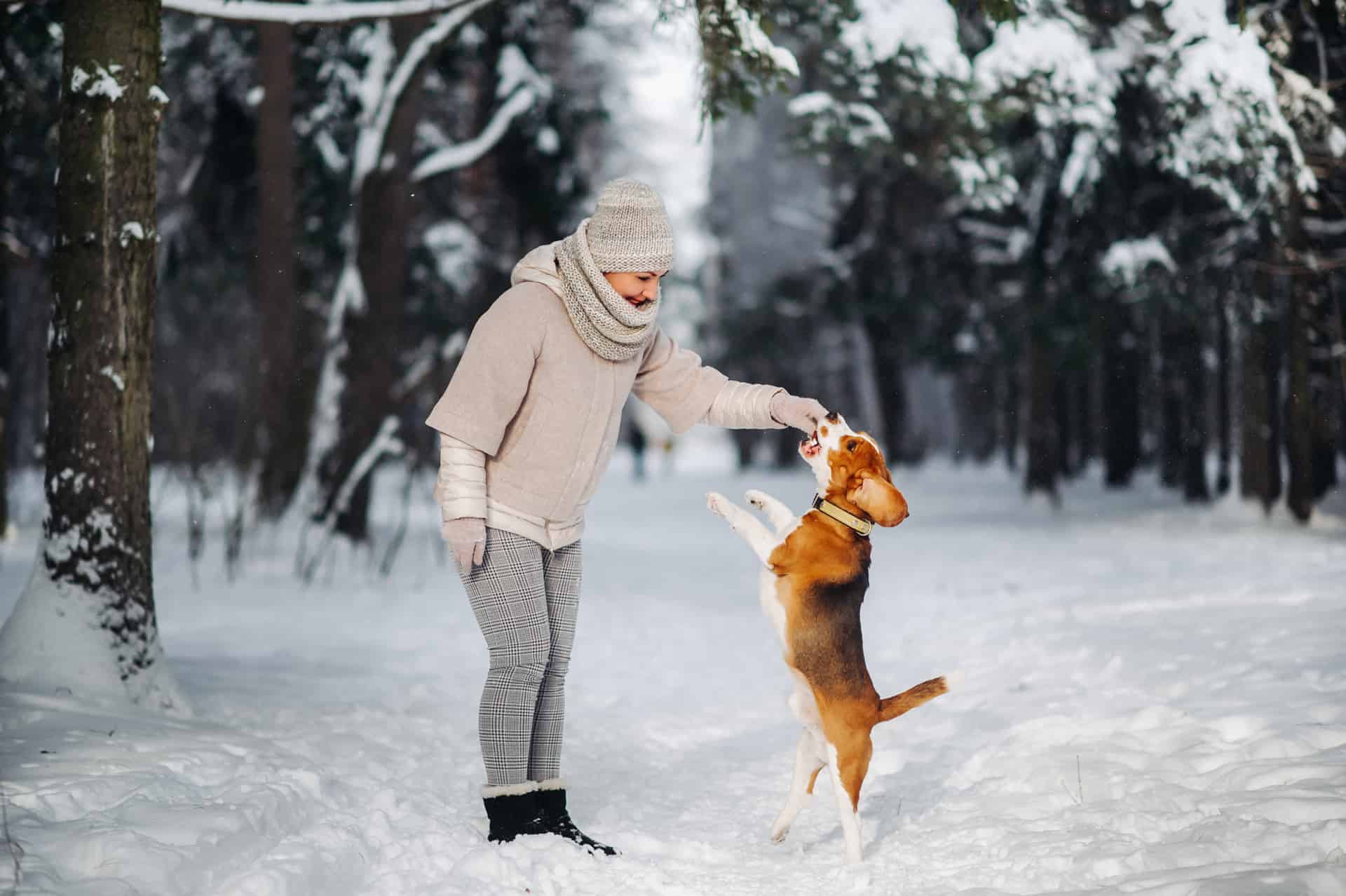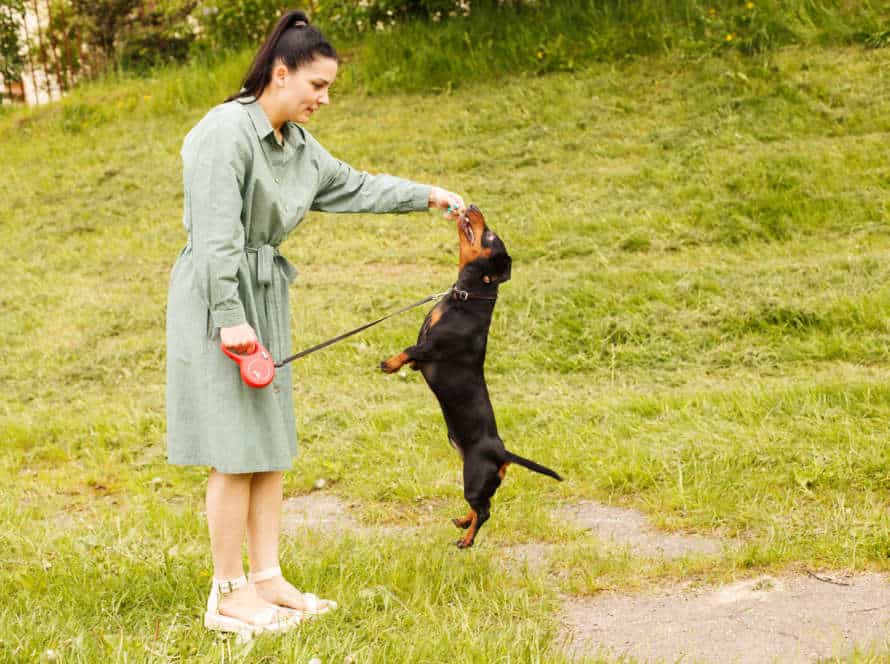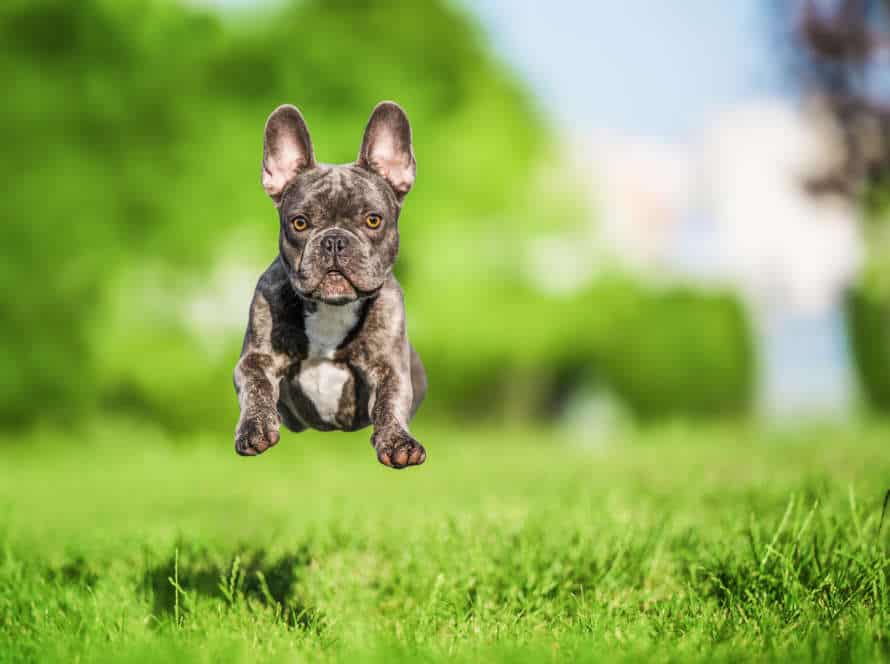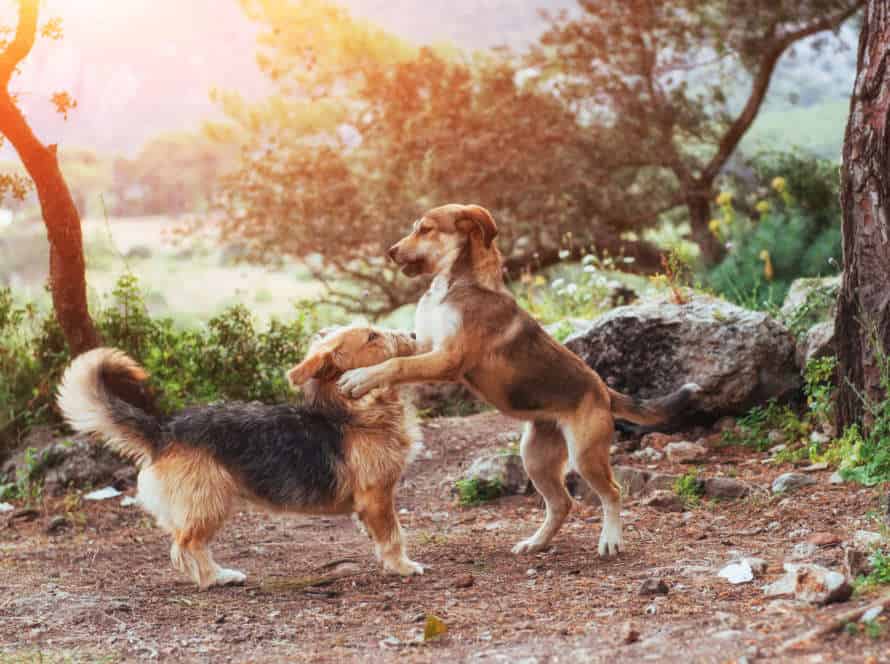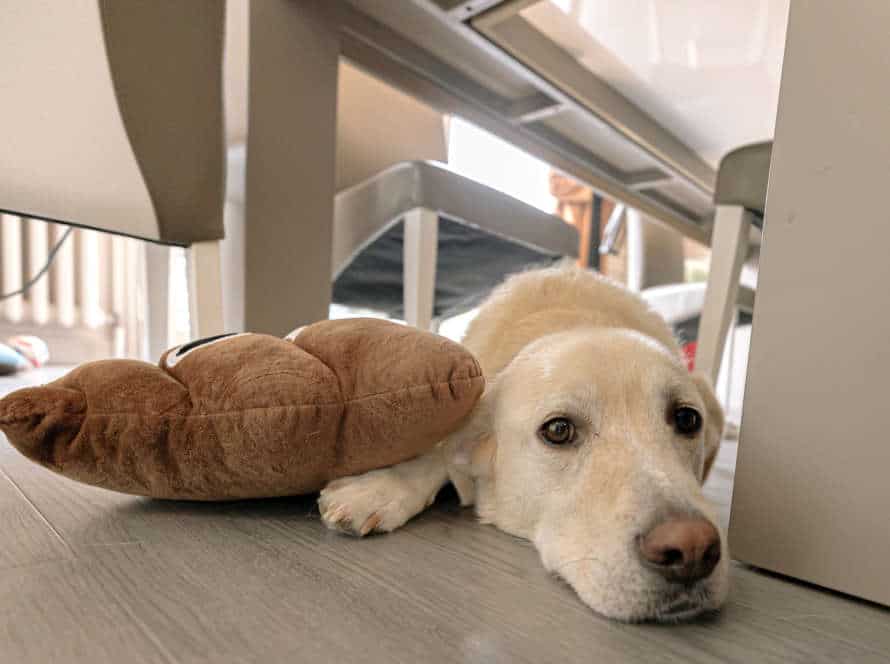The Connection Between Jumping and Attention-Seeking Behavior
Jumping can be a sign of attention-seeking when dogs don’t get enough exercise or stimulation. Bored or anxious pooches often resort to jumping to get their owners’ attention and let out energy.
Therefore, owners should identify the root cause and take steps to train their pup. Here are tips:
- Teach them “sit” and “down” commands.
- Reward good behavior with praise, treats and affection.
- Ensure enough physical and mental stimulation to keep them occupied.
Pro tip: Regular exercise and playtime help cut down attention-seeking from your furry friend.
Understanding the Behavior of Jumping
Jumping is a common way to seek attention. Both adults and children use it to get the approval of those around them, such as peers, parents, or authority figures. So, what links jumping to attention-seeking? Let’s explore the connection between these two behaviors and gain a better understanding.
Age and breed as factors for the behavior
Age and breed have an effect on a dog’s jumping behavior. It’s important to be aware of the relationship between jumping and attention-seeking.
- Puppies are more likely to jump because they have lots of energy and are curious.
- Older dogs may not jump as much due to joint issues.
- Certain breeds, like retrievers and terriers, have more energy and are more likely to jump. Research breeds before getting one to be prepared for their energy level and jumping habits.
Jumping can be a sign of attention-seeking. Training your dog with basic obedience and teaching them to stay or sit when greeting people can help reduce jumping and improve behavior.
Possible triggers for jumping
Dogs often jump, and the reasons vary. It’s good to know the triggers, so you can address it safely.
Possible triggers:
- Getting attention – good or bad.
- Excitement – when owners arrive home, or before a walk or play.
- Fear and anxiety – loud sounds, people, or situations.
- Not trained – they don’t know jumping is wrong.
Tip: Be consistent with correcting the jumping. Set boundaries, reward the good stuff – your pup needs to know what’s expected.
Different Types of Jumping Behavior
Jumping behavior can be different, depending on why it’s happening. Pet owners should be familiar with 3 types: greeting, play, and attention-seeking.
- Greeting: Dogs may jump when excitedly greeting people. Train them to greet politely, without jumping.
- Play: Jumping can mean they want to start playing. This is normal. Redirect it into a fun session.
- Attention-seeking: Some dogs jump to get attention or show frustration. Avoid eye contact and deny physical contact until they’re calm.
It’s essential to understand why a dog jumps, to help train them and create a positive bond.
Reasons Behind Attention-Seeking Behaviors in Dogs
Dogs may jump for attention. It’s a sign they need something from their owners. It’s their way to communicate or show excitement. Let’s explore why dogs seek attention and if jumping has something to do with it.
General lack of attention or stimulation
Dogs can jump too much because they don’t get enough attention or stimulation. They need interaction and stimulation to stay mentally healthy. Here are a few reasons why your pup could be jumping:
- Exercise: If they’re full of energy, they may jump for attention. Give them regular exercise and playtime.
- Boredom: If they’re left on their own without stimulation, they can become bored and jump.
- Separation anxiety: If they get anxious when separated, they may jump. See a vet or trainer for help.
- Training: If they haven’t been taught the right behavior, they may jump for attention. Use positive reinforcement to help them learn.
Figure out your pup’s needs, give them attention and stimulation. That’ll help reduce the jumping.
Separation anxiety
Separation anxiety is a psychological condition. Dogs experience fear, panic, or stress when separated from their owner or alone at home. To cope with this, they often show attention-seeking behaviors.
Reasons for attention-seeking behaviors can include not enough exercise, boredom, anxiety, or lack of socialization. Jumping is one of these behaviors, as dogs want physical touch or attention to soothe their anxiety.
To address this, give your dog plenty of exercise and mental stimulation. Crate training and departure cues can reduce anxiety and stress. If needed, get help from a dog trainer or behaviorist for severe cases.
Fear or nervousness
Fear and nervousness can cause dogs to jump and seek attention from their owners.
This could be because they are scared or anxious, bored, have not been socialized or trained, or just want to play.
To deal with this behavior, identify the cause.
This might include more exercise and training, getting help from a behaviorist for any fear or worry, or seeing a vet if the behavior is sudden or strange.
How Jumping Behavior is Connected to Attention-Seeking Behavior
Jumping is regular for kids. It might suggest problems. Often, it is an attention-seeking act. Kids jump and yell to get attention from their grown-ups. It can be irritating, humiliating and even risky. Knowing why and how it is connected to needing attention is vital. This post examines the relation between jumping and attention-seeking behavior.
Jumping as a common attention-seeking behavior
Jumping is a common attention-seeking behavior in both dogs and humans. Dogs jump to get our attention. Training them not to jump can be tough, but necessary. Here are some helpful tips:
- Ignore jumping. Don’t give your dog attention when it’s jumping up.
- Turn away. Show your dog that jumping won’t get your attention.
- Talk calmly. Use a calm, firm voice to tell your dog to stop.
- Reward good behaviors. Give your dog treats or affection when it greets you without jumping.
Reinforcing jumping behavior through attention
Jumping is a common behavior in dogs. It is often linked to attention-seeking. Giving attention to this behavior can only encourage it, which can cause problems.
To stop excessive jumping, try these tips:
- Ignore the dog when they jump. Turn around or step away until they stop.
- Once the dog calms down, ask them to sit or do something else that is not jumping.
- When the dog successfully does the alternative behavior, give them positive attention and rewards.
By training consistently, your dog will learn that jumping does not get them attention or rewards. They will be focused on positive behavior, which is more rewarding in the long run.
Redirecting behavior through training
Jumping in dogs is often linked to asking for attention. Training can help them discover better ways to ask for attention, leading to more enjoyable interactions. Here are some tips for training:
- Ignore the jumping. Turn away and don’t give eye contact or use words until they settle.
- Encourage good behavior. Treats or praise when the dog remains still and on the ground.
- Teach alternatives. Train them to sit, shake hands, or bring a toy when seeking attention. Reward when they do it.
- Consistency is key. Be consistent and make sure everyone follows the same methods. No confusion.
With patience and consistency, jumping can be changed to better behavior, leading to more positive relationships and stronger bonds.
Training and Managing Jumping and Attention-Seeking Behaviors
Dogs often jump, which can be a sign they’re looking for attention. Sometimes this behavior can be cute, but it can also be disruptive. To make your pup happy and healthy, you need to learn how to manage attention-seeking behaviors. This article talks about the connection between jumping and attention-seeking. Plus, it’ll show you how to properly manage it!
Setting up clear boundaries and expectations
Training dogs to manage jumping and attention-seeking behaviors requires setting up clear boundaries and expectations. Here are some tips:
- Teach the “sit” command. Ask your dog to sit before giving it attention.
- Ignore the jumping and attention-seeking. Attention reinforces the behavior.
- Reward desirable behavior with treats and attention.
- Use a consistent command like “off” when the dog jumps on people or furniture.
- Be patient and persistent. Reinforce positive behavior.
Providing alternative outlets for behaviors
Jumping is a sign of attention-seeking in dogs. But, training and providing alternatives can help. Here are some tips to redirect attention-seeking and stop jumping:
1. Anticipate the behavior and give them a toy, treat or activity they enjoy.
2. Train your pup to do something better like sit, shake hands or a high-five instead.
3. Do not punish them as this can make things worse.
4. Exercise and playtime will keep them busy and help reduce attention-seeking.
5. Be consistent and patient. This will help your pup focus on more positive behaviors, reduce jumping, and make their behavior better.
Positive reinforcement training techniques
Positive reinforcement training is great for managing jumping and attention-seeking in dogs. Instead of punishing bad behavior, reward the good! Here are a few tips:
- Reward your pup with treats, toys, or praise when they sit or settle instead of jumping.
- Ignore jumping and attention-seeking behavior. Don’t give them attention for it!
- Teach your dog basic commands like sit, stay, and come. This can redirect their focus.
- Stay calm and patient while training. Your energy can impact their behavior.
Positive reinforcement can help your pup learn how to behave and bring you two closer together!
Conclusion: Can Jumping Behavior be Stopped?
Do dogs jump? Yes! Pet owners often want to know how to stop it.
Training and patience are the answers. Jumping is usually attention-seeking.
Teach your pup alternative behaviors like sitting, lying down or shaking hands. Give them rewards when they perform those behaviors instead of jumping. No rewarding jumping by petting or hugging your dog when they do it.
Ask them to do an alternative behavior instead. Consistency and positive reinforcement are the keys to success.
Frequently Asked Questions
Q: Can jumping be a form of attention-seeking behavior?
A: Yes, jumping can be a common form of attention-seeking behavior, especially in children and pets.
Q: Why do some individuals engage in attention-seeking behaviors like jumping?
A: Attention-seeking behaviors like jumping can occur for various reasons such as seeking attention, validation, or stimulation.
Q: Is jumping an appropriate behavior in all situations?
A: No, jumping can be inappropriate or dangerous in certain situations such as when a person is injured or in public spaces where it can cause inconvenience or harm.
Q: How can attention-seeking behavior like jumping be addressed?
A: Addressing attention-seeking behavior like jumping can involve positive reinforcement for desired behaviors, setting boundaries and limits, and addressing any underlying emotional or behavioral issues.
Q: Can jumping be a symptom of a larger behavioral issue?
A: Yes, jumping can be a symptom of larger behavioral issues such as anxiety or hyperactivity. It is important to address any underlying issues to effectively address jumping behavior.
Q: Should jumping behavior be discouraged altogether?
A: No, jumping behavior can sometimes be appropriate and necessary such as in athletic or recreational activities. However, it is important to teach appropriate and safe behaviors and differentiate between when jumping is appropriate and when it is not.

